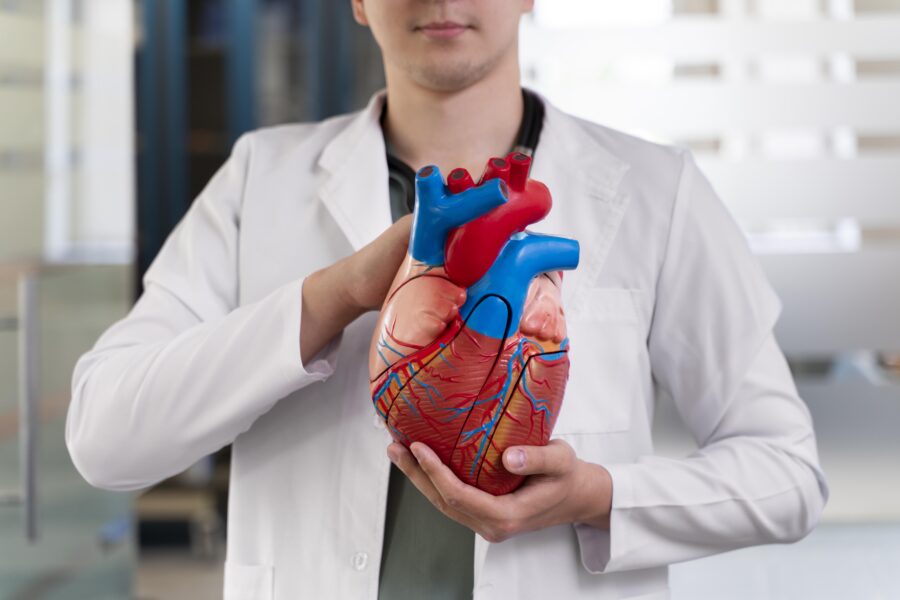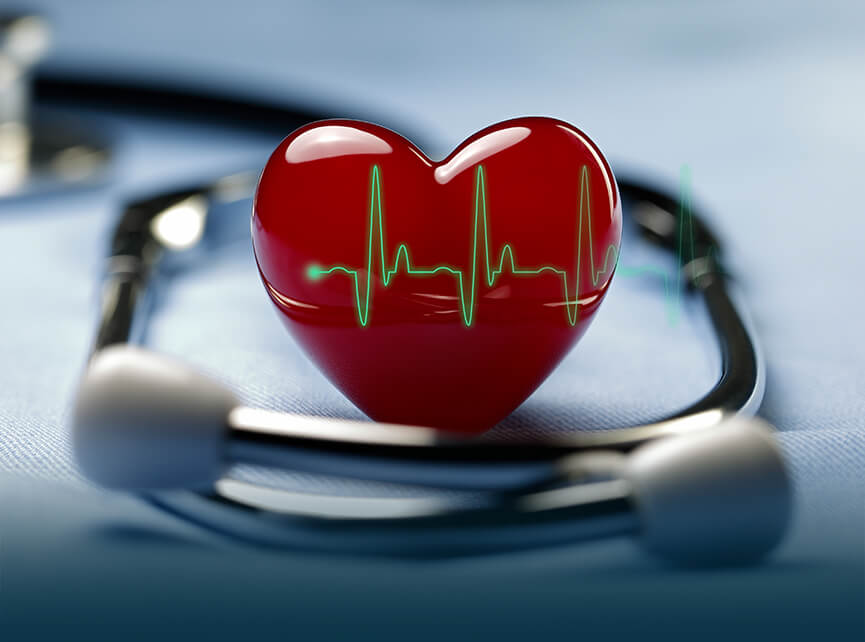Understanding the Significance of Cardiology in Modern Health Care Providers
Cardiology plays a crucial function in contemporary healthcare, especially as heart condition remains to be the leading source of mortality worldwide. Advancements in diagnostics and treatment have actually changed patient care, enabling earlier interventions and enhanced results. In addition, the change in the direction of preventative cardiology empowers people to handle their health proactively. As technology remains to develop, the combination of ingenious options might additionally redefine cardiology's effect on public health and wellness, triggering a more detailed examination of emerging fads and their effects.
The Frequency of Heart Problem and Its Effect on Public Health And Wellness
Heart disease continues to be the leading cause of fatality internationally, its effect extends much beyond individual people to impact public health and wellness systems and economies. The high prevalence of heart problem puts a substantial pressure on health care sources, requiring increased financing for therapy, rehab, and prevention programs. Public health and wellness initiatives have to attend to risk variables such as weight problems, smoking, and inactive lifestyles, which add greatly to the climbing incidence of heart conditions.Moreover, the financial burden related to cardiovascular disease is enormous, incorporating not only straight medical expenses yet likewise indirect expenditures associated with lost efficiency and early mortality. Neighborhoods encounter challenges in handling these prices, typically bring about differences in health care accessibility and outcomes. As the population ages and lifestyle-related risks proceed to rise, the urgency for efficient cardiology treatments comes to be paramount. As a result, attending to heart disease is not only a matter of private wellness yet likewise a crucial public health and wellness concern.
Breakthroughs in Heart Diagnostics and Imaging Techniques
Current advancements in cardiac diagnostics and imaging techniques have transformed the field of cardiology, enhancing the ability to spot and keep an eye on heart problem. Strategies such as heart MRI, CT angiography, and echocardiography have actually ended up being progressively sophisticated, offering in-depth pictures of cardiac structures and features. These techniques permit the early recognition of problems like coronary artery disease, heart failure, and valvular disorders.Moreover, developments in non-invasive diagnostics, such as wearable technology and remote surveillance tools, have encouraged individuals and healthcare companies. These tools promote real-time monitoring of heart rhythms and other important signs, resulting in timely interventions. In addition, man-made intelligence is being incorporated into imaging analysis, boosting accuracy and performance in diagnosis.
Innovations in Therapy Alternatives for Heart Conditions
Current improvements in cardiology have caused significant technologies in treatment options for heart disease. These include innovative surgical strategies that enhance step-by-step outcomes and emerging drugs that use brand-new opportunities for treatment. As the field evolves, these advancements play a crucial duty in improving person care and results.
Advanced Surgical Techniques
Technologies in surgical strategies have actually transformed the landscape of cardiology, using brand-new hope for individuals with heart conditions. Minimally invasive treatments, such as catheter-based interventions, have greatly decreased recuperation times and hospital remains. Strategies like robotic-assisted surgical procedure improve accuracy, allowing cosmetic surgeons to browse complex physiological frameworks with greater accuracy. Advancements in imaging innovation assist in real-time visualization throughout treatments, boosting end results. Transcatheter aortic shutoff replacement (TAVR) exemplifies a development in dealing with aortic constriction, making it possible for shutoff substitute without open-heart surgical procedure. In addition, hybrid approaches that integrate catheter-based and surgical methods offer tailored services for various cardiac issues. These sophisticated surgical techniques not only boost person safety and security yet likewise increase therapy alternatives, underscoring the important duty of technology in modern-day cardiology methods.
Emerging Treatments and medicines
As the landscape of cardiology remains to develop, emerging treatments and medicines play a critical role in boosting treatment options for heart disease. Technologies such as unique anticoagulants and advanced lipid-lowering representatives have actually transformed the monitoring of heart diseases, considerably decreasing patient morbidity and death. Furthermore, the development of genetics therapies and regenerative medication supplies appealing avenues for dealing with conditions previously deemed incurable. Medical tests are constantly revealing the efficiency of these therapies, pressing the boundaries of typical treatments. In addition, the combination of digital wellness technologies promotes customized medication, permitting customized treatment strategies based upon genetic and way of life factors. Jointly, these advancements highlight the vibrant nature of cardiology, improving client end results and redefining criteria of care in contemporary medical care.
The Role of Preventive Cardiology in Individual Treatment
Preventative cardiology plays an important function in person treatment by focusing on the recognition of danger variables that add to heart problem. With way of life alteration strategies and very early detection techniques, doctor can properly reduce the incidence of cardiovascular events - Cardiologist near me. This aggressive approach not only improves patient outcomes but also promotes long-lasting health
Risk Element Recognition
While cardio conditions stay a leading source of morbidity and death worldwide, reliable risk variable recognition acts as a cornerstone of preventative cardiology. Determining risk variables such as hypertension, hyperlipidemia, diabetes, and household history is essential for very early treatment. Health care professionals use different screening techniques to review these aspects, enabling tailored preventive actions. Furthermore, understanding a person's way of life choices, such as smoking cigarettes and physical lack of exercise, further educates danger assessments. This extensive evaluation enables medical professionals to develop tailored care strategies targeted at mitigating risks. By prioritizing threat element recognition, health care systems can boost client end results and decrease the overall problem of cardiovascular illness, ultimately adding to boosted public health methods and resource allocation.
Lifestyle Adjustment Approaches
A wide range of researches highlights the crucial function of way of living modification techniques in lowering cardiovascular illness danger. These approaches encompass dietary changes, enhanced physical task, smoking cessation, and weight administration. By embracing a heart-healthy diet regimen abundant in fruits, vegetables, whole grains, and lean proteins, people can decrease cholesterol levels and blood pressure. Normal physical activity strengthens the heart and enhances total cardio health. Furthermore, giving up cigarette smoking considerably lowers the risk of heart condition and improves recuperation prices for those with status quo. Weight monitoring better adds to cardio wellness by minimizing other danger aspects such as diabetic issues and high blood pressure. Carrying out these way of life changes not only promotes individual well-being but also functions as a keystone of click preventative cardiology in individual care.
Early Detection Techniques
Lifestyle modifications greatly add to minimizing heart disease threats, however they are most efficient when combined with early detection strategies. Preventive cardiology emphasizes the value of recognizing prospective heart issues prior to they intensify into significant conditions. Techniques such as blood stress tracking, cholesterol screening, and progressed imaging innovations like echocardiograms play important roles in reviewing cardio health and wellness. Biomarkers and genetic screening also boost the precision of very early detection, enabling customized precautionary strategies. Routine cardiac danger evaluations encourage health care providers to intervene proactively, potentially protecting against cardiac arrest and strokes (Dr Garcia). By incorporating these early detection approaches into regular treatment, individuals can gain from timely way of living interventions and targeted therapies, ultimately enhancing and enhancing end results high quality of life
Integrating Modern Technology Into Cardiology Practices
As developments in innovation remain to reshape different Discover More areas, the combination of ingenious devices and systems into cardiology practices has come to be important for boosting client care and results. Telemedicine systems allow cardiologists to keep track of individuals from another location, boosting access to care while minimizing the worry on healthcare facilities. Wearable gadgets, such as smartwatches, allow continual heart price surveillance, informing both doctors and individuals to possible concerns in real-time. In addition, expert system (AI) is being utilized to analyze substantial amounts of heart information, aiding in very early diagnosis and customized therapy strategies. Advanced imaging methods, consisting of 3D echocardiography, improve visualization of heart structures, causing a lot more exact treatments. Digital wellness documents (EHRs) simplify individual info administration, making sure that cardiologists have instant access to crucial data. With each other, these technical improvements are transforming cardiology, promoting aggressive monitoring and enhanced health and wellness results for clients with cardiovascular problems.
The Value of Client Education And Learning and Involvement
Individual education and involvement play a critical duty in the administration of cardiovascular health and wellness. By equipping patients with knowledge concerning their conditions, therapy options, and way of living adjustments, doctor encourage individuals to take address an energetic function in their treatment. This proactive technique can lead to enhanced adherence to suggested medications, nutritional changes, and workout routines, eventually lowering the risk of complications.Engagement likewise cultivates a strong patient-provider connection, urging open interaction and trust. When individuals really feel informed and involved, they are more probable to voice concerns and ask concerns, which can cause much better clinical outcomes. Furthermore, instructional sources, such as workshops or electronic platforms, can enhance understanding and promote self-management methods. In general, focusing on person education and learning and engagement is important for improving cardio wellness, boosting top quality of life, and minimizing healthcare costs related to heart diseases.
Future Trends in Cardiology and Their Potential Impact

Often Asked Concerns
What Way Of Life Modifications Can Minimize Cardiovascular Disease Danger?
The current question addresses way of living adjustments that can substantially minimize heart problem risk. Dr Garcia. Adopting a well balanced diet, involving in routine physical task, preserving a healthy and balanced weight, managing tension, and preventing cigarette can notably enhance cardio wellness
Just How Can I Identify Very Early Indicators of Heart Issues?
Identifying very early indicators of heart issues involves surveillance signs such as chest discomfort, lack of breath, exhaustion, and irregular heart beat. Timely recognition of these signs can motivate essential medical analysis and intervention for far better results.
What Are the Distinctions Between Cardiologists and Heart Surgeons?
The differences in between cardiologists and cardiac specialists hinge on their duties; cardiologists mainly detect and manage heart problems with non-invasive methods, while heart surgeons perform procedures to deal with structural heart problems. Each plays an important, distinctive role.

Just how Usually Should I Obtain My Heart Wellness Checked?
What Duty Does Genes Play in Heart Illness Risk?
Genes considerably influences heart disease threat, with familial patterns indicating acquired conditions. Specific genetics can predispose people to hypertension, cholesterol concerns, and various other cardiovascular troubles, highlighting the value of genetic testing in assessing heart wellness. Heart illness remains the leading reason of death around the world, its impact expands far past private people to impact public wellness systems and economic climates. Public health efforts must attend to risk factors such as excessive weight, cigarette smoking, and less active way of lives, which add significantly to the climbing incidence of heart conditions.Moreover, the economic worry associated with heart illness is tremendous, including not only direct clinical expenses but likewise indirect expenditures related to shed productivity and premature death. Preventive cardiology plays a crucial role in person care by concentrating on the recognition of threat aspects that contribute to heart illness. Man-made intelligence (AI) and maker understanding are improving diagnostics and person monitoring, making it possible for very early discovery of heart conditions. The differences between cardiologists and heart cosmetic surgeons exist in their duties; cardiologists primarily identify and handle heart problems via non-invasive approaches, while cardiac cosmetic surgeons execute medical procedures to deal with architectural heart concerns.
Comments on “What Cardiology Jupiter patients often misunderstand (and the truth)”